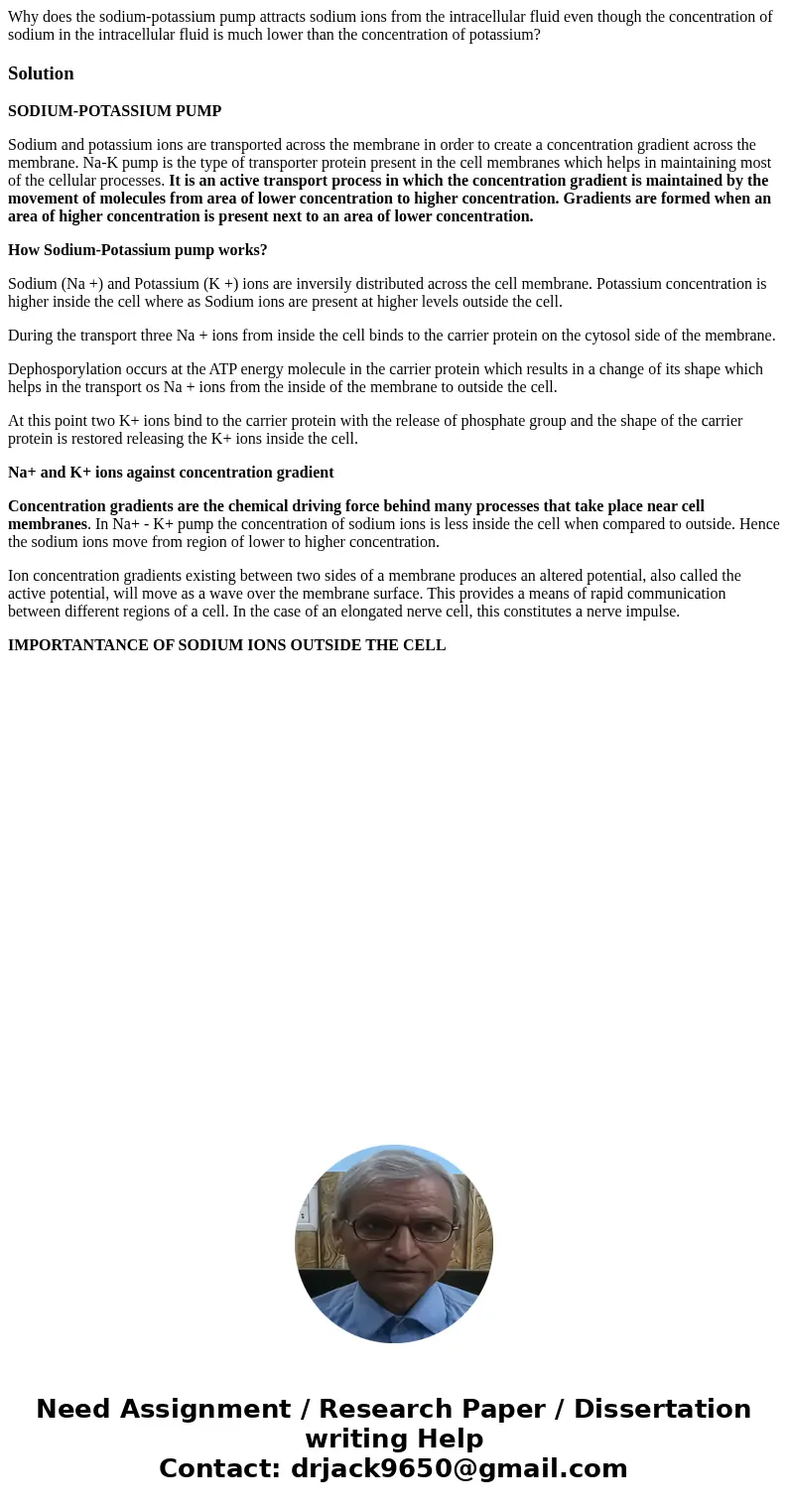Why does the sodiumpotassium pump attracts sodium ions from
Why does the sodium-potassium pump attracts sodium ions from the intracellular fluid even though the concentration of sodium in the intracellular fluid is much lower than the concentration of potassium?
Solution
SODIUM-POTASSIUM PUMP
Sodium and potassium ions are transported across the membrane in order to create a concentration gradient across the membrane. Na-K pump is the type of transporter protein present in the cell membranes which helps in maintaining most of the cellular processes. It is an active transport process in which the concentration gradient is maintained by the movement of molecules from area of lower concentration to higher concentration. Gradients are formed when an area of higher concentration is present next to an area of lower concentration.
How Sodium-Potassium pump works?
Sodium (Na +) and Potassium (K +) ions are inversily distributed across the cell membrane. Potassium concentration is higher inside the cell where as Sodium ions are present at higher levels outside the cell.
During the transport three Na + ions from inside the cell binds to the carrier protein on the cytosol side of the membrane.
Dephosporylation occurs at the ATP energy molecule in the carrier protein which results in a change of its shape which helps in the transport os Na + ions from the inside of the membrane to outside the cell.
At this point two K+ ions bind to the carrier protein with the release of phosphate group and the shape of the carrier protein is restored releasing the K+ ions inside the cell.
Na+ and K+ ions against concentration gradient
Concentration gradients are the chemical driving force behind many processes that take place near cell membranes. In Na+ - K+ pump the concentration of sodium ions is less inside the cell when compared to outside. Hence the sodium ions move from region of lower to higher concentration.
Ion concentration gradients existing between two sides of a membrane produces an altered potential, also called the active potential, will move as a wave over the membrane surface. This provides a means of rapid communication between different regions of a cell. In the case of an elongated nerve cell, this constitutes a nerve impulse.
IMPORTANTANCE OF SODIUM IONS OUTSIDE THE CELL

 Homework Sourse
Homework Sourse